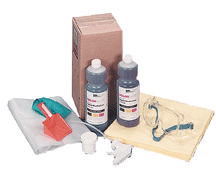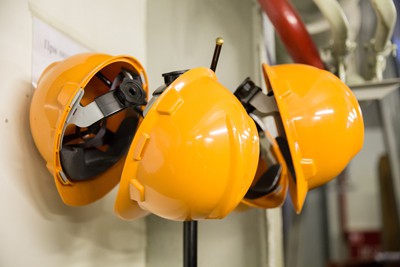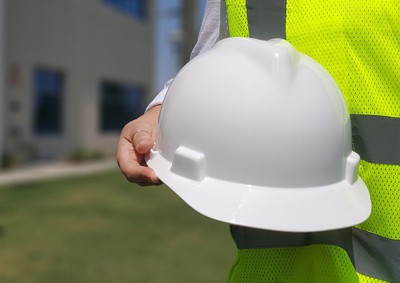Your eyes are not just the windows to your soul, they are also an essential tool for everyday life—including at work. Whether that’s time spent in a warehouse office or on a construction site, your eyes are constantly exposed to various hazards that could cause injury.
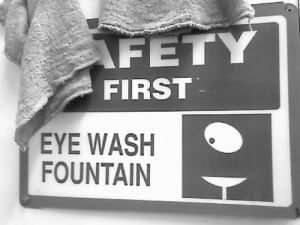
Eye wash fountain notice
Work-related eye injuries are not only painful and inconvenient but can also result in long-term vision problems or even blindness. That’s why it’s crucial to protect your eyes while working, no matter what industry you are in.
So, let’s explore the common causes of work-related eye injuries and how to prevent them. From wearing the right protective equipment to having a safety eyewash station onsite, these tips will help you keep your eyes healthy and safe on the job.
Common Causes of Workplace Eye Injuries (and How to Avoid Them)
According to the Centers For Disease Control and Prevention (CDC), around 2,000 employees receive medical treatment every day for a work-related eye injury. Roughly one-third of those injuries are serious enough to require emergency medical treatment. And approximately 100 cases result in at least one day of lost work.
Eye injuries can occur in practically any industry or workplace—from industrial factories and construction sites to offices and labs. Failing to provide workers with the appropriate personal protection equipment (PPE) could place them at a higher risk for eye injuries. Not to mention the fact that the Occupational Safety and Health Administration (OSHA) mandates the use of PPE:
Eye and face protection must be provided whenever necessary to protect against chemical, environmental, and radiological hazards or mechanical irritants” — OSHA.
Eye injuries can occur due to various hazards in the workplace, with some of the most common causes being:
Flying Debris
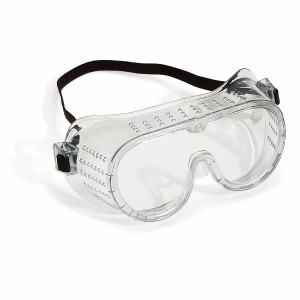
Safety goggles help protect workers’ eyes from dangerous flying debris and chemical splashes
A primary cause of work-related eye injuries is flying debris. Small pieces of metal, wood, glass, or plastic can shoot out from tools or machinery with enough force to become embedded in a worker’s eye.
To mitigate this risk, it’s crucial for workers to wear appropriate safety glasses or goggles when operating power tools and heavy machinery. Neglecting to wear durable safety eyewear in these situations exposes operators to potential eye injuries such as corneal abrasions, lacerations, or even blindness.
Example workplace use: Construction workers should wear protective eyewear when using power tools such as drills, saws, or nail guns. These tools often generate flying debris that can cause serious eye injuries if proper eye protection is not worn.
Chemical Splashes
Workers may also sustain eye injuries from chemicals, cleaning agents, or solvents splashing into their faces. Workplaces that deal with such chemicals should have emergency eyewash stations strategically placed in all hazardous areas. However, it is not enough to merely install these stations; employees must also receive proper training on safety shower locations and operation to meet OSHA requirements.
Example workplace use: Laboratories or other sites where chemicals are handled, should have easily accessible and well-marked eyewash stations. Lab personnel should receive training on the location of these stations and the correct procedure to follow in case of a chemical splash.
Another potential workplace risk for the eyes is radiation, such as from ultraviolet (UV) or infrared (IR) rays. Exposure to these situations can cause eye damage like cataracts, retinal burns, or even blindness. This type of injury is common in welding, laser work, and medical imaging where full face shields and/or appropriate protective lenses are necessary to minimize eye damage.
Finally, infectious diseases can cause eye infections like conjunctivitis or uveitis, which can spread to other parts of the body. These hazards are common in healthcare settings or sites where workers share PPE, so appropriate care and sterilization processes should always be followed in these workplaces.
Tips To Prevent a Work-Related Eye Injury
- Provide workers with protective eyewear. Employers must ensure that workers have access to suitable protective eyewear for their specific tasks and work environment. This can include safety glasses, goggles, or face shields, depending on the level of protection required.
- Maintain power tools and heavy machinery. Regular maintenance of power tools and machinery is essential to reduce the risk of mechanical failures that could result in eye injuries. Proper maintenance helps ensure the tools are in good working condition and reduces the likelihood of flying debris or other hazards.
- Train on Emergency Shower Stations. Educate employees about the location and usage of safety showers and eyewash stations. Workers should know how to quickly and correctly operate these stations to flush out hazardous substances from their eyes in case of an emergency.
- Proper Fit of Protective Eyewear. When using face PPE against dust or chemicals, ensure a secure and airtight fit around the wearer’s eyes. This prevents particles or chemicals from entering the eye area and causing irritation or injury.
- Inspect and Disinfect Protective Eyewear. Check your protective eyewear before each use to ensure it is in good condition and free from cracks, scratches, or other damage. If protective eyewear is shared among employees, it is important to thoroughly clean it before being worn by another person. This helps prevent the spread of contaminants or infections.
- Corrective Lens Wearers. Employees who wear prescription glasses, contacts, or any other corrective lenses should also wear appropriate protective eyewear over them. Protective eyewear should be compatible with corrective lenses to provide adequate protection.
Conclusion: Your Eyes Matter – Take Care of Them!
Your eyes are an essential tool so protecting them is crucial. Work-related eye injuries can cause temporary or permanent vision loss, which can be life-changing. By following these guidelines and taking proactive measures, you can significantly reduce the risk of work-related eye injuries. Promoting a culture of safety and providing proper training and protective equipment can safeguard employees’ vision and well-being in various workplace settings.
If you’d like more information about emergency showers or eyewash stations to improve safety in your facility, reach out today: call AbsorbentsOnline toll-free at (800) 869-9633 or email us.
This is a revision to a blog post with an original publication date of June 5, 2014
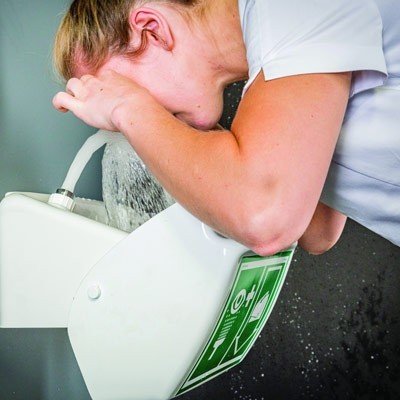
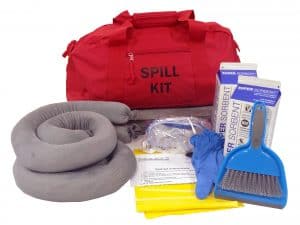
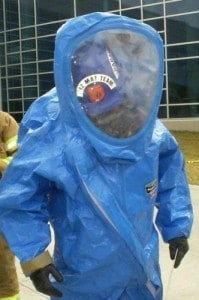
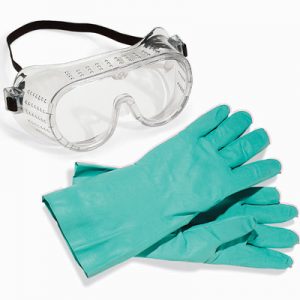

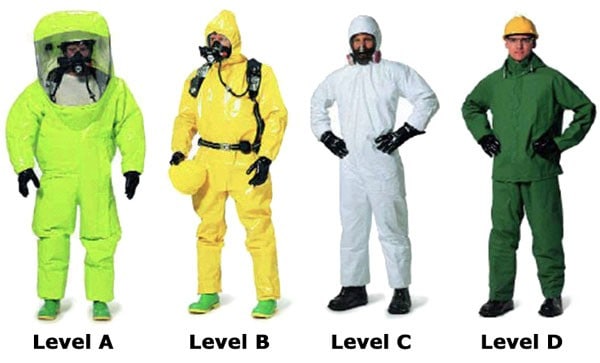
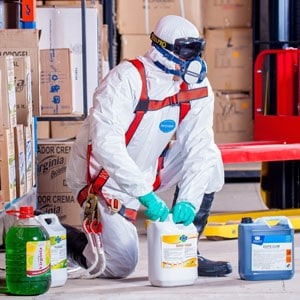
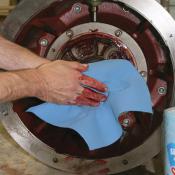



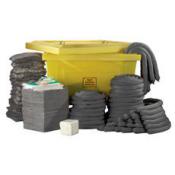

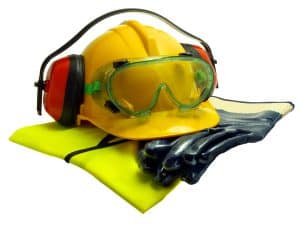
 Despite scores of regulations from OSHA, the Environmental Protection Agency (EPA), and various other governmental entities, hazardous chemical exposure is still a pervasive problem in many workplaces. In fact,
Despite scores of regulations from OSHA, the Environmental Protection Agency (EPA), and various other governmental entities, hazardous chemical exposure is still a pervasive problem in many workplaces. In fact, 